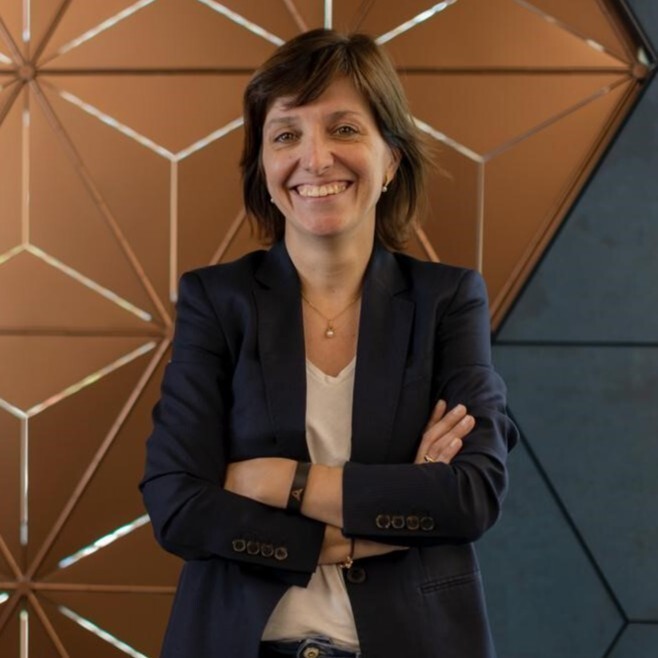How SEAT and CUPRA implemented the biggest training program in its history equaling 340,000 hours of learning
In an exclusive interview with SEAT and CUPRA’s VP of people and organization Dr Laura Carnicero, we discuss how the Spanish car giant is reskilling employees.
News in Brief
With more than 14,000 employees, automotive company SEAT and CUPRA has implemented the biggest training programs in its history to ensure individuals are equipped with the right skills for the future of work.
The business encourages vertical and horizontal movement, to inspire employees to take ownership of their learning and development.
Dr Carnicero identifies three main focal points the business has set out to achieve over the next five years.
In the ever-changing workplace, no one should be left behind. But with advancing technology, it’s now more crucial than ever to upskill, reskill, and embrace new ways of working.
One business that is fully embracing this change is Spanish car manufacturer SEAT. SEAT is a parent company with two distinct brands: SEAT and CUPRA.
In an exclusive interview with UNLEASH, Dr Laura Carnicero, vice president of people and organization at SEAT and CUPRA, shares how the business is steering its employees towards transformational change.
Embracing change and promoting learning and development
As sustainability is becoming a great priority for businesses and consumers alike, the automotive industry is seeing an increase in electric vehicles, meaning businesses need to transform their factories and reskill their employees to meet the new demands.
In recognition of this need, SEAT and CUPRA has implemented the biggest training program in the company’s history, which will amount to 340,000 hours of training in the next few years.
This will encourage employees to think about electrification, digitalization, and artificial intelligence in a different way, as well as introducing a new mindset that employees need to face in this exciting new era.
“Our way of working is also changing,” Dr Carnicero says. “Many years ago, people would join big companies, such as ours, and expect to remain there their whole life. Nowadays, everything moves quickly, so we must adapt to have the best talent available and develop that talent so that it grows. Because, at the end of the day, what makes the difference? It’s the people that make the difference.”
Identifying that the transition towards electrification is a huge challenge for the business, the company has implemented two strategic pillars: organizational and cultural transformation, and learning and development.
These pillars highlight that employees need to transform themselves not only with new technologies but also with new sub-skills.

Dr Laura Carnicero, vice president of people and organization at SEAT and CUPRA
“Everything is changing fast,” Dr Carnicero says. “In the past, you could have gone to university and studied to become an engineer and that would have been enough for the rest of your life. But nowadays, it’s not like that. Everything keeps changing so quickly, so you must always be learning.”
To help enforce this, Dr Carnicero introduced two key programs when she took on the role of head of training and development at SEAT and CUPRA in 2015.
The first was implementing an ‘Always Learning’ program, to allow employees to explore new paths no matter what the subject is or whether it relates to their current position.
For example, employees who work in the business’s factories may be interested in gaining a greater understanding of computer programs, such as Excel or coding. This has allowed employees from blue-collar backgrounds to transition to white-collar roles with great success.
The second program, called Industry 4.0, is a training project for all workers, which aimed to provide employees with the skills needed to meet the new technological challenges of the future.
One aspect involves understanding that any change brings a certain amount of fear and uncertainty.
The project therefore aims to successfully demonstrated that these changes are natural and that there is nothing to be afraid of.
“Nowadays, we have technology that gives us access to learning and training opportunities at the click of a button,” Dr Carnicero says. “We have a number of programs to support employees through this transition.
“We also utilize the Degreed platform to offer online and face-to-face learning and, of course, access to hybrid opportunities. This technology helps our employees progress with their careers. For example, employees producing cars need the possibility of being trained not only for the position they hold but also for positions they would be interested in transitioning to in the future.
“Through this platform, the business ensures that everybody – all 14,000 employees – has access to our learning and development courses.”
Encouraging positive cultural transformations
A key component of encouraging employees to grow and develop their skills is offering the freedom to move vertically, as well as horizontally within a business. Promoting this can help HR leaders retain strong talent, by encouraging employees to find growth within the company, rather than seeking it elsewhere.
“Throughout my 24-year career at SEAT and CUPRA, I have been a part of three brands, three areas, and six departments – which is quite a big number of changes,” Dr Carnicero says.
“And for me, I think this is one of the most interesting aspects of working for SEAT and CUPRA, as the company provides employees with the security to explore different roles they may never have thought of trying. Using my career as an example, I changed from production to product planning before moving into HR.”
SEAT and CUPRA make these changes easy and transparent, encouraging everyone to explore internal transitions, which are always 100% confidential.
“Personally, I am a fan of rotating,” Dr Carnicero adds, “because when people rotate, they change their point of view and gain the ability to apply all the knowledge, experience and networks from the previous role held within the company.
“For example, when I transitioned to HR, I was also the director of our Apprentice School, and I was able to implement changes because I came in with a different perspective and a different network of contacts.”
Additionally, SEAT and CUPRA provide the possibility to move between different companies within the Volkswagen Group.
The business has a talent manager responsible for being the point of contact to help make these transitions possible, while also ensuring that employees at every level have the possibility to change.
To ensure these transformations continue to occur in the future, SEAT and CUPRA have outlined three main priorities the business sets out to achieve over the next five years.
Dr Carnicero explains: “The first point of focus is electrification and to ensure people have the right skills to support them through the transformation.
“Then, we also have our cultural transformation. This isn’t something that happens overnight – you need to make sure that everyone is walking the talk, which must span all HR processes. The way that we run the company needs to align with our key values, so our employees follow suit.
“Our final area of focus is society. We need to prioritize how we approach DEIB and ESG. As one of the biggest companies in Spain, it’s crucial that we continue to play an important role in our country’s society.”
Sign up to the UNLEASH Newsletter
Get the Editor’s picks of the week delivered straight to your inbox!

Senior Journalist
Lucy Buchholz is an experienced business reporter, she can be reached at lucy.buchholz@unleash.ai.
